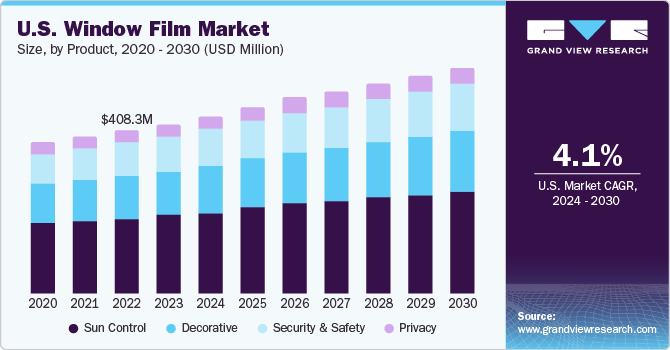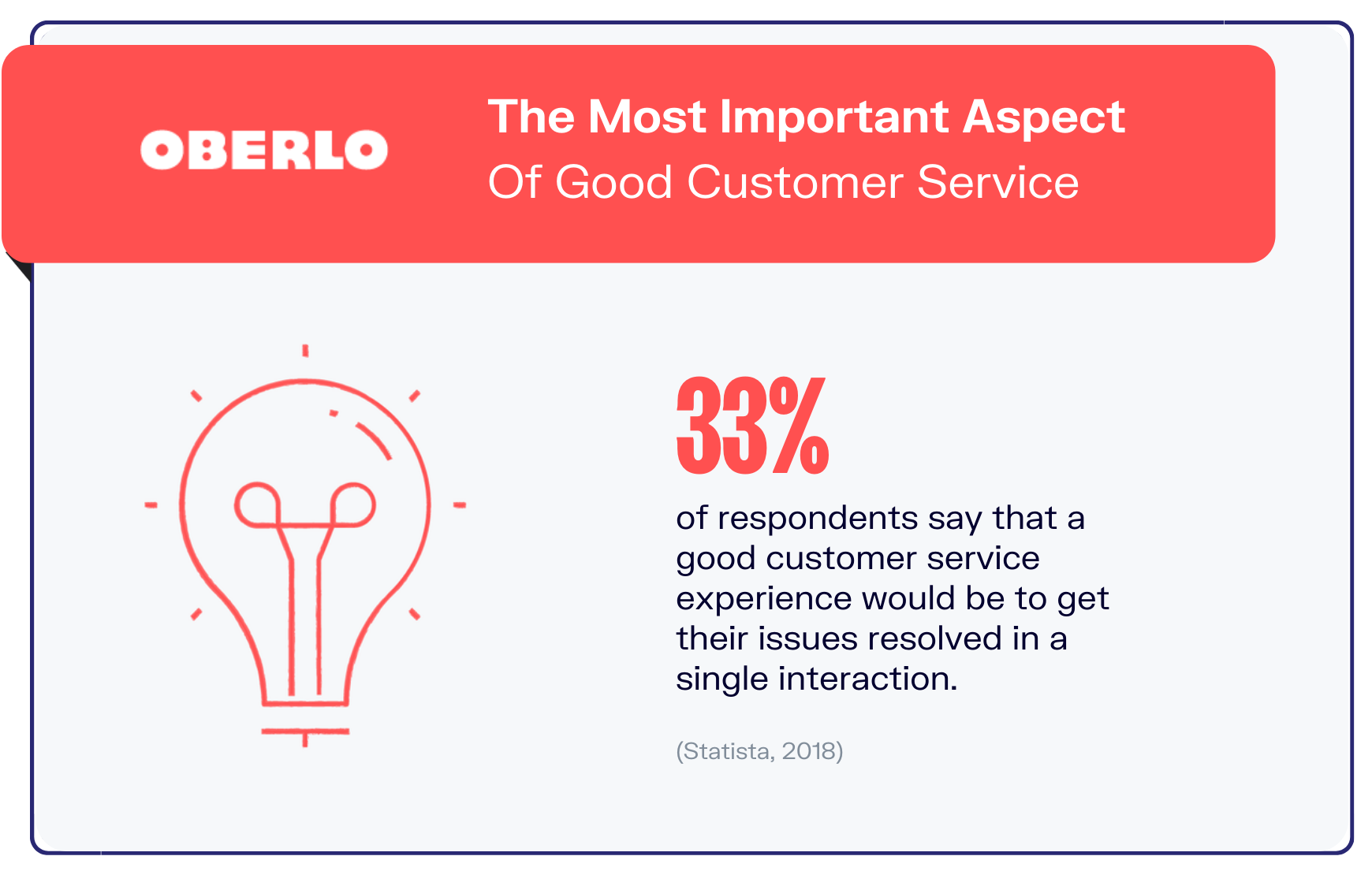The global window tint industry brought in $11.04 billion in 2022. With the right business plan, you can grab a piece of this sizable and growing market. Currently, the market is projected to grow at a compound annual growth rate (CAGR) of 5.3% from 2023 to 2030.

Vehicles are a leading user of window tint products. Countless commercial buildings also utilize window films for UV protection, temperature regulation, safety, and more. This opens the doors to various job opportunities within the window film industry.
This guide will walk you through how to start a window tint business. Topics include market research, competitive analysis, registering your EIN, obtaining appropriate business insurance, marketing concepts, and optimized accounting practices.
1. Conduct Window Tint Market Research
Market research is essential to anyone considering a window tinting business. Research offers insight into your target market, the best social media platforms to market with, local market saturation, and other important aspects of developing a business plan.

Some details you’ll gather through window tinting services market research include:
- Residential properties offer fertile ground, as safety, security, energy efficiency, and UV protection drive consumer demand.
- Government incentives for efficiency help drive installations for energy-saving purposes.
- New construction brings further openings, as building codes increasingly mandate window tints.
- Growing emphasis on green buildings also boost product integration.
- Barriers to market entry are low compared to other industries.
- Startup costs range from $10K for mobile services to $50K for a dedicated retail shop.
- Necessary equipment like film application tools and plotters are affordable to purchase or finance.
- Most states have minimal licensing requirements apart from standard business permits.
Competition does exist from established national chains and local independents. Customization and specialization provide avenues for differentiation. Developing niche expertise in automotive, residential, or commercial building markets builds credibility.
2. Analyze the Competition
Understanding the competitive landscape is crucial when starting any small business, including window tinting. Identify direct local rivals to assess your differentiation potential.

Some ways to get to know local window tinting businesses include:
- Drive around town scoping window tint signage on storefronts and vehicle fleets.
- Search online directories like Yelp to pinpoint nearby players.
- Note the long-standing shops along with newcomers.
- Mystery-shop a cross-section of competitors.
- Observe factors like store aesthetics, customer service, and vehicle turnaround times.
- Request quotes to compare pricing models and product lines.
- Identify potential gaps like service specialization or niche expertise that your startup could fill.
- Evaluate online visibility too since 82% of sales now initiate digitally.
- Scrutinize competitor websites using tools like SEMRush to gauge SEO strength.
- Monitoring social media signals engagement levels while reviewing sites like Facebook helps benchmark community sentiment.
Analyzing competition on comprehensive factors provides actionable intelligence. You gain insight into competitor pricing models, service bundles, store presentations, customer focus areas, and online visibility strategies. Identifying potential gaps keeps your business viable in a competitive landscape.
3. Costs to Start a Window Tint Business
When starting a successful window tinting business, careful financial planning and cost awareness set the stage for sustainability. This overview examines typical expenses at launch and on an ongoing basis.
Start-Up Costs
- Filing formal registration paperwork runs around $100 per business structure.
- Drafting a business plan spans $500 to $1,500 if hiring an expert consultant.
- Storefront leases average $15 to $30 per sq. ft. monthly, translating to $2,500 for a modest 800 sq. ft. retail shop.
- Commercial general liability insurance kicks in around $100 monthly for ample protection.
- Branding assets like logos and marketing materials add $500 to $5,000+ depending on complexity.
- Facility build-outs encompass lighting, flooring, bathrooms, waiting areas, tinting bays, and security.
- Budget $15,000 to $30,000 for a full 1,200 sq. ft. retail space turnover.
- Used application equipment like plotters, cutters, and heat guns run $5,000 to $10,000 altogether. An initial film supply order spans another $5,000 for variety.
- Staffing needs include hiring and training installers at $15 to $25 per hour.
- Many startups bootstrap administrative tasks initially before needing to budget $40,000+ later to bring aboard dedicated office support.
All said, launching a full-scale window tinting storefront carries around $100,000 in start-up costs when including build-outs, equipment, staff, insurance, and ample working capital.
Ongoing Costs
Managing ongoing monthly expenses is equally crucial for lasting success after opening doors. Typical costs include:
- Rent/Mortgage: $2,000
- Insurance: $150
- Utilities: $500
- Staff Payroll: $4,000 for 2 full-time employees
- Supplies/Materials: $750
- Software, Tech, Tools: $150
Other areas of a professional window tinting business that will keep costs going include:
- Annual taxes and licensing renewals tally another $1,000 or so yearly.
- Marketing and advertising funds likely run $500 monthly as well to pay for digital channels like social platforms, SEO, and online display ads.
Traditional window tinting shops carry sizable start-up costs nearing six figures for leasing, build-outs, and equipment. But leaner mobile services can bootstrap launch for under $15,000. Carefully budgeting for ongoing rent, payroll, supplies, and services ensures smooth sailing and profit potential after opening.
4. Form a Legal Business Entity
When establishing a successful window tint business, navigating legal formations impacts taxation, liability, and operating flexibility. Weighing the pros and cons of each for this industry steers optimal choices.
Sole Proprietorship
A sole proprietorship simply equates the business to the individual owner. No formal registration is required beyond standard permits and licensing. Owners claim all profits and debts on personal tax returns, however, risking personal assets for business liabilities. This simplicity suits solo mobile tinters but lacks protections if expanding.
Partnership
Partnerships enable shared ownership between two or more co-owners as documented in formal partnership agreements. General partnerships still expose personal assets proportionately, unless structured as limited partnerships with isolated liability. Multiple owner dynamics complicate decision-making, however, making this structure ill-advised for novice business partners in window tinting or most independent ventures.
Limited Liability Company (LLC)
Limited liability companies (LLCs) provide the best of all worlds for window tint shops. LLC registration protects personal assets from any business-related lawsuits or claims, unlocking growth. Solo entrepreneurs can operate as sole member LLCs initially, welcoming added members seamlessly later on via operating agreements. LLC income passes through to members’ taxes like a partnership too, avoiding corporate double taxation.
Corporation
Establishing fuller C corporations triggers double taxation where incomes get taxed at the corporate level then again for owners as dividends. Unless pursuing external investors or eventual public markets, neither scenario likely applies to neighborhood window tint startups. S corporations function akin to LLCs tax-wise if preferring a corporate structure all while securing liability limits.
5. Register Your Business For Taxes
Even sole proprietorships and single-member LLCs need federal Employer Identification Numbers (EINs) for window tinting enterprises and beyond. EINs function like Social Security numbers specifically for business tax and reporting purposes. The online application takes under 10 minutes via the IRS website with no fees or paperwork.
Simply navigate to the EIN Assistant and answer a few preliminary questions about your business structure and activities. When prompted, provide your mailing address, phone number, and SSN to pre-populate your info. Specify any responsible parties like owners or officers as needed too.
After submitting, your EIN appears on-screen to save for later tax documentation. You also receive immediate email confirmation with a printable PDF attachment. Retain this for bank account openings, licensing applications, and everything warranting evidence of your formal business existence from Uncle Sam’s perspective.
State sales tax licensing also relates to EIN status for retailers. Visit your state revenue office website to locate window tinting-specific sales tax resources and registration procedures. Costs range from $0 to $100 depending on local policies. Filing monthly or annual tax returns and remitting collected sales taxes soon follow.
6. Setup Your Accounting
Careful financial tracking provides the fuel for any thriving window tinting enterprise long-term. Investing in organizational accounting early, even as a solopreneur, paves success when eventually expanding staff and revenue activity.
Open a Business Bank Account
Begin by separating personal and business finances. Maintain a dedicated business checking account and credit card solely for all tint shop expenses and earnings. This streamlines categorizing transactions for taxes and ensures you pay yourself accurately as the owner.
Accounting Software
Establish digital accounting systems for centralized control. User-friendly software like QuickBooks connects directly to bank/card accounts via API to automatically import and categorize all purchases and deposits. This eliminates manual entry while supplying dynamic reporting on cash flow, profits and loss statements, and balance sheets to inform decisions. Expect costs around $30/month.
Hire an Accountant
Consider retaining an enrolled agent or CPA annually as well, especially when growth complexity sets in. On average, small business accounting fees range from $200 for simple 1040 filing assistance up to $5,000 for full-service bookkeeping and advisory. This imparts professional guidance on properly tracking deductible expenses.
7. Obtain Licenses and Permits
When launching a window tinting enterprise, proper documentation proves critical before servicing first customers. Find federal license information through the U.S. Small Business Administration. The SBA also offers a local search tool for state and city requirements.
Common tint shop licensing includes city or county business permits, auto repair facility registration, and workers’ compensation policies as warranted. Fees span $50 to $500 based on jurisdiction rules. Applications require submission of ownership identification details, intended service specialties, and facility safety information when relevant.
General business licenses simply verify lawful area operations overall at municipal and county levels. These require annual renewal with costs varying by geography and company size. Lacking this baseline approval risks ordinance violations and barriers when later pursuing other critical paperwork.
For shops that are detailing, applying films, or repairing automotive glass, auto repair registration also enters play. States regulate service bays, hazardous material handling, and diagnostic equipment specifications for these facility types.
If hiring staffers beyond sole ownership, workers’ compensation requires carriage as well. This insurance covers employee injury-related medical bills and partially replaces lost wages from accidents on the job. Most states mandate coverage through private insurers.
8. Get Business Insurance
Operating any window tinting venture without adequate insurance invites financial catastrophe. Various policies work together to shield against lawsuits, accidents, natural disasters, and other threats that could otherwise bankrupt a small business.
For example, a faulty aftermarket film installation leading to impaired driving visibility that causes a severe collision warrants liability coverage. If sued, the shop bears responsibility for potential millions in medical bills, damaged property, lost wages, and more pending the case outcome.
Additionally, a heavy summer storm producing golf ball-sized hail could easily demolish an uninsured tinting shop. From shattered glass storefronts to building and equipment damage, restoration and replacement costs run steeply quickly. Interrupted operations also cease incoming revenue streams during repairs.
Another scenario might involve onsite bodily injuries of clients or employees. Someone accidentally cuts themselves on broken glass or gets burned by chemicals. Lacking injury or accident protection again exposes the business to crushing hospital bills, especially if at fault.
Compiling appropriate policies curbs exposure by transferring risk. Common options include general liability, commercial property, workers’ compensation, vehicle, loss of income, and umbrella coverage. Expect premiums spanning 0.5% to 5% of revenue.
Compare rates through online marketplaces like CoverWallet to find the best value. Design customized protection blending essential safeguards. Ultimately, proactive planning best insulates enterprises against the unknown.
9. Create an Office Space
While many tinting technicians operate mobile-only, securing a fixed office space centralizes operations for consistent growth. Storefront visibility and room for staging install jobs make an eventual rental advisable despite added costs. Weigh the options below when the time comes to graduate beyond home bases.
Coworking Office
As business ramps up, joining nearby coworking spaces like WeWork bridges professional presence with scheduling flexibility. Expect a $300 monthly membership for Floating access to common meeting rooms and desks. Dedicated private offices run over $500 monthly but allow storing materials long-term while coming and going freely.
Commercial Office
Leasing standalone office storefronts allow fully customized buildouts for service bays alongside lobby room consultations and waiting areas for clients. Displaying tint film samples and before/after project galleries boost showroom appeal as well. Reserve 800 square feet in multi-unit properties or freestanding buildings, budgeting $1,500+ in rent monthly.
On-Site Office
If you run a retail location, or a garage (for tinters specializing in vehicle windows), you may find room on-site for an office. An on-site office is preferable to many new businesses that tint windows because it keeps you close to the action and doesn’t require another long-term lease.
10. Source Your Equipment
Launching any tinting operation hinges on properly outfitting mobile units or retail bays to professionally install films. Whether buying new or pursuing used window tinting equipment deals, cover the essentials without overspending early on.
Buying New
One-stop supply retailers like Solar Films offer every tool needed from proprietary plotters, heat guns, and felt squeegees to films and maintenance products. Convenience does impact budgets, however, with basic 4-foot plotters spanning $300 and premium options approaching $5,000.
Buying Used
Scour Craigslist, Facebook Marketplace, and OfferUp for steeply discounted window tint accessories from dealers exiting the industry. Search locally for in-person equipment inspection before purchasing to ensure functionality. Expect savings of 50% or more buying quality secondhand tools. Supplement with new bulk film orders sourced competitively online later.
Renting
Some specialty rental outfits like United Rentals offer short-term lift and scaffolding rentals helpful for multi-story commercial jobs. However, window tint tools remain rare finds in the sharing economy currently. Still, if sourcing scarce large-scale items infrequently, calculate occasional project rental costs against buying outright.
Leasing
Established dealers now offer equipment lease-to-own programs for those lacking ample capital upfront. This allows opening your doors quickly with premium gear in hand that gets paid off incrementally from ongoing profits over 12-36 months. Expect leasing qualification processes similar to other lines of credit.
11. Establish Your Brand Assets
Cultivating a memorable brand presence fuels recognition, referrals, and retention for blossoming window tinting ventures. Investing in visual identity markers like logos alongside digital properties builds familiarity and trust within your regional market.
Getting a Business Phone Number
Portraying professionalism begins with securing a dedicated business phone line. Services like RingCentral provide toll-free and local number options with custom greetings, extensions, and voicemail integration. Expect around $30 monthly for robust features and unlimited calling to boost customer connections.
Creating a Logo and Brand Assets
A polished logo synthesizes an emotional connection with prospects at first glance. Modern, minimalist emblems tend to resonate best currently. User-friendly online tools such as Looka supply novice-friendly DIY graphic design for custom images, typefaces, colors, and icons tailored to window tinting.
Print Business Cards and Signage
Hard copy materials tangibly signal legitimate enterprise status when networked in person. Budget signage also builds awareness for storefront visibility. Online printers like Vistaprint offer affordable, high-quality business cards for under $20 per 250 pack. Yard signs, interior dėcor, and apparel stitching promote the brand across channels.
Purchase a Domain Name
Buy your custom dot-com branding real estate next, like ShadyTinting [dot] com. Domain registrars such as Namecheap make securing website URLs affordable at around $9 annually. Opt for .com over alternates and feature primary keywords upfront for better engagement.
Building a Website
An owned website centralizes digital marketing efforts while conveying adaptability. Utilize free webpage-building tools like Wix to launch initial online presences rapidly. Those preferring full-service development can hire experts on freelance platforms such as Fiverr with custom site costs averaging $500.
12. Join Associations and Groups
Beyond sourcing equipment and securing shop space, connecting with fellow window tinting pros breeds long-term success. Industry associations, local meetups, and online communities provide invaluable wisdom and potential customer pipelines early on.
Local Associations
In most states, window film installer alliances like the Florida Sun Control Association offer guidance through policy advocacy, ethical oversight, and technical training. Membership fees hover around $500 annually but grant access to conventions, certification programs, and helplines during uncertain jobs.
Local Meetups
Keep tabs on area networking events through aggregators like Meetup. Interact in person at new member mixers and seminars hosted by the local Chamber of Commerce and small business alliances. Contribute insights during open discussions while making crucial connections for later cross-referrals. Consider also exhibiting at annual home and garden shows to capture residential owner leads.
Facebook Groups
Lastly, get plugged into niche social communities like the Window Tint – 313tint.com and Window Tint Classifieds Facebook groups with thousands of global members. Share struggles and solutions with fellow solo tinters and enterprise owners alike. Learn the latest product application tips and marketing tactics that the pros leverage daily.
13. How to Market a Window Tint Business
Implementing multifaceted marketing proves pivotal for steadily growing recognition and sales as a fledgling window tinting outfit. While an existing customer network and word-of-mouth referrals offer the strongest ROI potential early on, blending in targeted digital and traditional promotions expands reach further.
Referral Marketing
Satisfied customers provide the best endorsements. Offer referral rewards like 10% off their next appointment for any new customer mentions. Simple yet effective in incentivizing shares among their inner circles organically.
Digital Marketing
- Launch Google Ads campaigns geofencing zip codes within 10 miles of the home base. Target homeowners and commercial property managers specifically with custom ad copy and calls-to-action to request quotes.
- Run retargeting ads on Facebook to reconnect with recent website visitors. Dynamic creative and special discount codes help nudge engagement.
- Start a YouTube channel creating weekly tutorials for DIY film applications. Boost visibility through paid promotion and SEO optimization. Monetize longer term with ad revenue sharing.
- Guest blog on regional home upgrade sites like apartmenttherapy.com detailing pros’ secrets that amateurs overlook. Embed links directing readers to your website.
- Create an account on Yelp, Thumbtack, and other referral platforms. Respond promptly to all inquiries and offer exclusive signup promotions.
Traditional Marketing
- Print direct mail postcards with eye-catching designs. Target surrounding zip codes where residents match key buyer demographics.
- Provide custom window cling decals as giveaways at local cafes or car washes. Include brief descriptors of services offered.
- Explore partnerships with auto body shops and dealerships to provide add-on tinting service referrals.
- Rent targeted billboard space along highways and commercial zones announcing opening specials.
- Check local radio and cable TV rates for affordable spot placements during home improvement shows.
Casting wider outreach nets through channels matching ideal audience traits makes new customer acquisition more predictable. Analyze campaign performance every quarter, pruning inefficient avenues while doubling down on the most fruitful initiatives. With consistent nurturing, intentionally developed marketing funnels pay long-term dividends.
14. Focus on the Customer
Delivering white-glove customer service acts as the keystone for prosperous window tinting enterprises. Beyond producing pristine, bubble-free installations, attentive communication and convenience cement customer loyalty long-term.

Given the intimate nature of property access, clients must trust technicians entering their homes and buildings. All staff should conduct thorough walkthrough consultations first to identify needs and set expectations before starting work. Answer questions clearly while assessing challenges like multiple difficult-to-reach panels.
During jobs, provide shoe covers and drop cloths to protect flooring through messy film preparation and mounting. Clean up completely afterward as well before presenting beautifully finished products.
Do not rush patrons to check work immediately if more adjustments are warranted. Offer to return another day if anything shifts during the initial curing period. Follow up personally via phone later that week to ensure satisfaction. Email customized care instructions for maintaining the new films over years of use too.
This combination of consultative needs assessment, respectful service delivery, and proactive follow-through earns word-of-mouth referrals continually. Once established as the region’s premiere tinting provider through exceptional efforts, expect many leads from past purchasers, friends, and neighbors.
